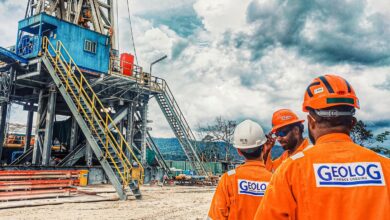Maersk’s Durkin: Step-changes in safety do not require big spending
By Linda Hsieh, Managing Editor
The offshore drilling market remains in turmoil, but the industry’s efforts to improve safety performance are carrying on without disruption. “We cannot and we will not allow market conditions to dictate how we care about our people or the environment,” Angela Durkin, COO of Maersk Drilling, said in a keynote address at the 2016 IADC Drilling HSET Europe Conference. “We will continue to work together and learn from each other and learn from other industries to avoid making the mistakes from the past,” she said to conference attendees in Amsterdam on 22 September.
The good news is that commitment to safety does not require a significant amount of money. “Everyone here knows that higher spending does not equate to higher safety performance because, otherwise in the good old days, we would have just thrown bags of money into our safety problems, and they would now be extinct,” Ms Durkin said. “It doesn’t work like that because money can’t buy the minds and the hearts.”
Instead of throwing money at the problem, Maersk Drilling has been improving safety by investing in, motivating and engaging its employees. Ms Durkin cited as an example an initiative that the company took to prevent dropped objects, where for one hour all rigs ceased work and did a hazard hunt for potential dropped objects. Upon analysis of the results, the company realized that there was one rig that stood out by having found almost no potential hazards during the exercise. This was traced to a simple matrix that the rig had implemented of frequent potential dropped object inspections.
“Based on this, we designed a program consisting of simple dropped object prevention inspection that has been carried out on all of our rigs,” she explained. Inspections are now completed on each rig every four weeks. “We have also designed a KPI metric, which looks at the ratio of potential dropped object inspections versus the actual dropped object. That drives the right behaviors, and it empowers the rigs to take active control about their dropped object destiny.
“We have seen this year a solid step-change in our drops performance, and it did not require a big spend,” Ms Durkin continued. “All it required was engagement, simplification of a process, alignment and alignment with the metrics, as well.”
Market conditions have also allowed Maersk Drilling to identify opportunities to improve its environmental stewardship. Since 2014, the contractor has been working with operators on an energy efficiency program to reduce energy consumption on its rigs. “This requires close collaboration and procedures that go well beyond guidelines regarding efficient usage of power,” she explained. Before the market downturn, however, a 10% to 20% saving on energy costs was considered an insignificant portion to the total well cost. “But now every penny has been turned twice, and any potential saving is being investigated and implemented.”
The energy efficiency program is now picking up significant momentum across the fleet, she noted. “It’s the first step in many that will lead us to greatly reduce energy demand onboard as we also identify areas where we can switch to lower power consumption and energy storage.”




